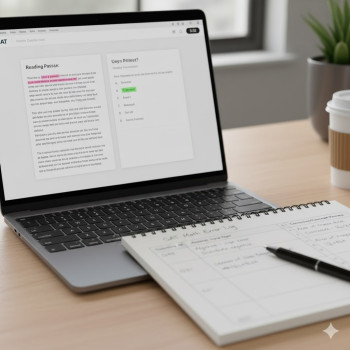Why this matters: Boston University and the role of the SAT
Applying to Boston University (BU) can feel like preparing for a marathon and a sprint at the same time. The marathon is the whole high school experience—grades, extracurriculars, essays, recommendations. The sprint is the test season: the Digital SAT, practice, timing, and the decision of whether to submit scores at all. Understanding how BU views SAT scores, what a competitive score looks like, and how to build a smart, personalized preparation plan will help you shape an application that stands out.

Is the SAT required for Boston University?
Short answer: BU considers SAT scores if you submit them; the university’s approach has shifted in recent years and can vary by admissions cycle. That means you should make a deliberate choice. Submitting a strong SAT result can reinforce your academic readiness and strengthen scholarship eligibility, while skipping scores may be a reasonable option for some applicants depending on your overall profile.
How should you decide? Treat this as a strategic question, not a default. If your SAT sits comfortably within or above BU’s typical admitted range (see the next section), submitting it is usually advantageous. If your score is below that range, weigh whether you can realistically improve it with targeted prep before application deadlines.
What is a competitive SAT score for Boston University?
Looking at BU’s recent admitted student score range gives practical context for what ‘‘competitive’’ often means. The middle 50% of admitted students commonly falls in the high 1400s on the SAT total—students below that can and do get in, and students above that are not guaranteed admission, but this range is a helpful benchmark when planning your strategy.
Understanding the range and what it means
When we talk about the middle 50%, we mean the 25th–75th percentile scores among admitted students. If your score is below the 25th percentile, BU might categorize you as a reach based on test scores alone; if you’re above the 75th percentile, your SAT strengthens your application as a probable match or safety (depending on other factors).
How to read the SAT numbers: a simple table
Here’s a compact way to interpret scores and recommended actions.
| Score Band (Total SAT) | Likely Category for BU | Recommended Action |
|---|---|---|
| Below 1350 | Below BU’s typical admitted range | Consider focused prep and a retake; emphasize academics & compelling extracurriculars; discuss submitting only if improved. |
| 1350–1430 | Approaching match | Target improvement with timed practice and concept review; submit if you can push higher. |
| 1430–1510 | BU’s middle 50% (competitive) | Submit your score; strengthen other parts of application and consider scholarship opportunities tied to scores. |
| 1510+ | Above BU’s typical range | Submit—strongly supports admission and merit aid. Maintain GPA and craft standout essays. |
Digital SAT specifics: testing format and what to expect
The SAT transitioned to a digital format, changing timing and structure compared to the older paper test. You’ll encounter adaptive sections, shorter total test time, and a different pacing rhythm. Preparation should therefore include digital practice: full-length, timed practice tests on a laptop or tablet to mirror the real experience.
Key differences to prepare for
- Adaptive sections: The Digital SAT adapts to performance, so early accuracy matters. Practicing section starts is essential.
- Shorter, more focused sections: This can help students who struggle with stamina, but pacing still matters.
- Tools and navigation: Become fluent with the digital calculator, answer-review tools, and how to flag questions.

Timeline: When to take the SAT if you’re applying to BU
Timing is everything. Use the college application calendar as your backbone: Early Decision applications to BU typically have earlier deadlines than Regular Decision. Give yourself room for at least one—or ideally two—SAT attempts before the earliest deadline you plan to meet.
Sample timeline (junior and senior year)
- Junior year spring: Take a baseline full-length Digital SAT to establish where you are.
- Junior summer: Intensive study block—target weak areas and build endurance; take one practice test every 2–3 weeks.
- Senior year fall (August–October): Official SAT administrations—aim for your first live test in this window if you plan Early Decision.
- Senior year fall (October–November): If needed, retake to improve; leave time for score reports to be processed.
- Regular Decision applicants: You can still plan for late-fall or early-winter test dates, but avoid last-minute testing.
How to plan studying: strategy, not just hours
Quality beats quantity. Studying smarter—targeting the kinds of questions that cost you the most points—moves the needle faster than piling on generic practice. Break your prep into focused stages: diagnostics, skill-building, timing and strategy, and polished practice tests.
Step-by-step study plan (12 weeks example)
- Weeks 1–2: Diagnostic testing and error log—take two timed practice sections (one Math, one Reading/Writing). Identify recurring patterns of mistake.
- Weeks 3–6: Concept rebuilding—target weak areas (e.g., algebra, data analysis, command of evidence) with short daily lessons and practice sets.
- Weeks 7–9: Timing and strategy—learn question triage (when to guess, when to skip), review adaptive section behavior, and polish calculator use.
- Weeks 10–12: Simulated test weeks—take two full digital practice tests under test conditions, review using the error log, and refine pacing.
What else matters to BU beyond the SAT?
BU practices holistic review. Strong SAT scores help, but grades, course rigor, essays, recommendations, and meaningful extracurricular commitments speak loudly. Use the SAT to complement, not replace, these components.
How to tell if you should submit SAT scores
- Your SAT is within or above BU’s middle 50% → Submit, unless other elements of your application are extraordinarily strong without it.
- Your SAT is below the 25th percentile → Consider additional prep and a retake, or only submit if you improve.
- You have a strong story, upward grade trends, or exceptional extracurriculars → You may choose not to submit, but understand admissions will weigh the absence of test data differently than a strong submitted score.
Scholarships and scores: the payoff of a higher SAT
High SAT scores can make you more competitive not just for admission but also for merit-based scholarships. While BU’s financial aid policies include need-based aid, merit criteria sometimes factor in standardized test performance. If scholarships are part of your plan, strategic efforts to raise your score can have financial returns.
Real-world examples and scenarios
Example 1: Maya, 1470, strong science research—Maya’s SAT falls in BU’s middle 50%, and her sustained research experience and recommendations make her a compelling candidate. Submitting the SAT reinforced her academic readiness.
Example 2: Carlos, 1350, rising GPA—Carlos took the SAT junior year, scored 1350, then raised his math and science grades senior year. He chose a targeted winter retake and used a focused 8-week prep plan to reach 1450 before submitting—improving his admissions positioning and qualifying him for scholarship consideration.
Example 3: Aisha, test-optional route—Aisha’s SAT was 1300, but she had a 4.0 GPA and an outstanding portfolio of community leadership and arts achievements. She applied without scores and leaned on essays and recommendations to tell a cohesive story. This route can work, but it’s a strategic choice that depends on your whole profile.
Common pitfalls and how to avoid them
- Pitfall: Waiting too long to start digital practice. Fix: Begin digital practice early to master navigation and pacing.
- Pitfall: Studying aimlessly—lots of hours, little gain. Fix: Use diagnostics and an error log to target weak skills.
- Pitfall: Overemphasizing a single test score. Fix: Balance improvement efforts with essays, recommendations, and academic coursework.
How parents can help—practical, supportive steps
Parents are critical allies: logistic support, emotional encouragement, and help building a realistic timeline. The best assistance is structured and calm—help schedule test dates, create quiet test-day conditions, and celebrate progress (not just scores).
Concrete things parents can do
- Help create a realistic, written testing and prep calendar tied to application deadlines.
- Provide materials and a distraction-free workspace for practice tests.
- Encourage a growth mindset—emphasize improvement over perfection and normalize retakes as part of strategy.
How tutoring and personalized help can accelerate progress
Targeted tutoring is often the difference between plateauing and meaningful improvement. One-on-one guidance helps pinpoint the exact habits and content gaps that cost you points—and replaces generic advice with specific, measurable actions.
For families considering tutoring, look for programs that offer tailored study plans, expert tutors who know the Digital SAT nuances, and data-driven insights to track progress. For example, Sparkl’s personalized tutoring pairs students with expert tutors, builds a tailored study plan, and offers AI-driven insights that highlight which question types to prioritize—bringing clarity and efficiency to prep.
Test-day tips for the Digital SAT
- Simulate the environment: Do at least two full-length practice tests on the same device type you’ll use on test day.
- Manage timing early: The digital format rewards early accuracy; don’t get bogged down on the first hard question.
- Use the tools: Practice using the digital calculator and any in-test features (flagging, review). These are speed multipliers if used well.
- Nutrition and rest: Sleep and a calm morning routine matter more than a last-minute cramming session.
Putting it all together: a decision flowchart
Not an actual picture, but this is the mental flow I recommend when deciding whether to take or submit an SAT score to BU:
- Step 1: Where is your score now? Take a diagnostic.
- Step 2: Is your score within or above BU’s middle 50%? If yes, plan to submit.
- Step 3: If not, can you reasonably improve before your application deadline? If yes, schedule a retake and pursue targeted prep.
- Step 4: If no retake is realistic, evaluate if your other application strengths can carry you without scores; consider submitting only if you can show upward trend elsewhere.
Checklist: Final pre-application sprint
- Confirm BU deadlines for Early Decision and Regular Decision and work backwards for testing dates.
- Complete at least two full Digital SAT practice tests under timed conditions within two months of your planned official test date.
- Build an error log and focus on repeating mistakes until they stop happening.
- Decide whether to submit scores at least two weeks before application deadlines to allow processing time.
- Polish essays and secure strong recommenders—SAT scores are one part of a broader narrative.
Final thoughts—and a reality check
Boston University is selective and looks for well-rounded students who can contribute academically and socially to campus life. A strong Digital SAT score is valuable, especially if it aligns with your transcript and extracurricular narrative, but it is only one piece of a larger puzzle. If you approach prep strategically—targeting your specific weaknesses with high-quality, digital practice and expert guidance—you exponentially increase your chances of walking into admissions with confidence.
If the process feels overwhelming, remember that help exists that specializes in turning stress into steady progress. Personalized tutoring—like the 1-on-1 guidance and tailored study plans offered by Sparkl—can be integrated into a sensible plan that respects your schedule, focuses on high-impact improvements, and gives you the technical and emotional support to perform your best on test day.
Go forward with a plan
Make one final promise to yourself and your family: make a plan, start early, and iterate. The Digital SAT is a skill-based challenge. With focused practice, thoughtful strategy, and the right support, you can put your best academic foot forward for Boston University.
Good luck—approach each practice test as progress, not pressure. Boston University admits people, not numbers, and the best applications combine preparation with personality, persistence, and clear storytelling.

















No Comments
Leave a comment Cancel